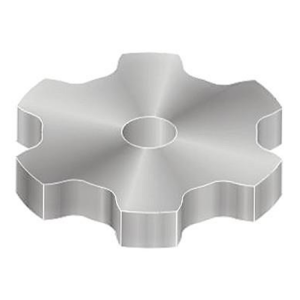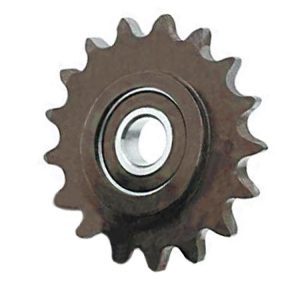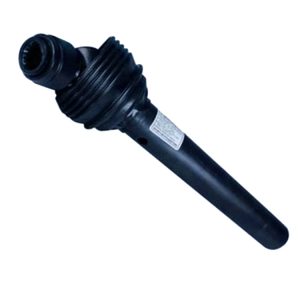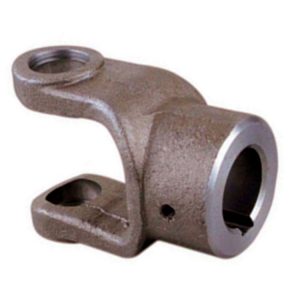Product Description
V Belt Pulley with ISO9001 (SPA, SPB, SPC, SPZ)
1. V-Pulley
Taper Bore
SPZ SPA CHINAMFG SPC
2. V-Pulley
Stock Bore
SPZ SPA CHINAMFG SPC
3. V-Pulley
Adjustable Speed
TB-1 TB-2 SB-1 SB-2
4. V-Pulley
Multi-Wedged
J L M
| 50 – 1 x SPZ – 1008 rü 15 | Taper-v-belt pulley |
| 56 – 1 x SPZ – 1008 rü 15 | Taper-v-belt pulley |
| 60 – 1 x SPZ – 1008 bü | Taper-v-belt pulley |
| 63 – 1 x SPZ – 1108 bü | Taper-v-belt pulley |
| 67 – 1 x SPZ – 1108 bü | Taper-v-belt pulley |
| 71 – 1 x SPZ – 1108 bü | Taper-v-belt pulley |
| 75 – 1 x SPZ – 1108 bü | Taper-v-belt pulley |
| 80 – 1 x SPZ – 1210 bü | Taper-v-belt pulley |
| 85 – 1 x SPZ – 1210 bü | Taper-v-belt pulley |
| 90 – 1 x SPZ – 1210 bü | Taper-v-belt pulley |
| 95 – 1 x SPZ – 1210 bü | Taper-v-belt pulley |
| 100 – 1 x SPZ – 1210 bü | Taper-v-belt pulley |
| 106 – 1 x SPZ – 1610 bü | Taper-v-belt pulley |
| 112 – 1 x SPZ – 1610 bü | Taper-v-belt pulley |
| 118 – 1 x SPZ – 1610 bü | Taper-v-belt pulley |
| 125 – 1 x SPZ – 1610 bü | Taper-v-belt pulley |
| 132 – 1 x SPZ – 1610 bü | Taper-v-belt pulley |
| 140 – 1 x SPZ – 1610 bü | Taper-v-belt pulley |
| 150 – 1 x SPZ – 1610 bü | Taper-v-belt pulley |
| 160 – 1 x SPZ – 1610 bü | Taper-v-belt pulley |
| 170 – 1 x SPZ – 1610 bü | Taper-v-belt pulley |
| 180 – 1 x SPZ – 1610 bü | Taper-v-belt pulley |
| 190 – 1 x SPZ – 2012 bü | Taper-v-belt pulley |
| 200 – 1 x SPZ – 2012 bü | Taper-v-belt pulley |
| 224 – 1 x SPZ – 2012 bü | Taper-v-belt pulley |
| 250 – 1 x SPZ – 2012 bü | Taper-v-belt pulley |
| 280 – 1 x SPZ – 2012 bü | Taper-v-belt pulley |
| 315 – 1 x SPZ – 2012 bü | Taper-v-belt pulley |
| 355 – 1 x SPZ – 2012 bü | Taper-v-belt pulley |
| 400 – 1 x SPZ – 2012 bü | Taper-v-belt pulley |
| 500 – 1 x SPZ – 2517 | Taper-v-belt pulley |
| 50 – 2 x SPZ – 1008 rü 26 | Taper-v-belt pulley |
| 56 – 2 x SPZ – 1108 rü 26 | Taper-v-belt pulley |
| 60 – 2 x SPZ – 1108 rü 26 | Taper-v-belt pulley |
| 63 – 2 x SPZ – 1108 bü | Taper-v-belt pulley |
| 67 – 2 x SPZ – 1108 bü | Taper-v-belt pulley |
| 71 – 2 x SPZ – 1108 | Taper-v-belt pulley |
| 75 – 2 x SPZ – 1210 bü | Taper-v-belt pulley |
| 80 – 2 x SPZ – 1210 bü | Taper-v-belt pulley |
| 85 – 2 x SPZ – 1610 bü | Taper-v-belt pulley |
| 90 – 2 x SPZ – 1610 bü | Taper-v-belt pulley |
| 95 – 2 x SPZ – 1610 bü | Taper-v-belt pulley |
| 100 – 2 x SPZ – 1610 bü | Taper-v-belt pulley |
| 106 – 2 x SPZ – 1610 bü | Taper-v-belt pulley |
| 112 – 2 x SPZ – 1610 bü | Taper-v-belt pulley |
| 118 – 2 x SPZ – 1610 bü | Taper-v-belt pulley |
| 125 – 2 x SPZ – 1610 bü | Taper-v-belt pulley |
| 132 – 2 x SPZ – 1610 bü | Taper-v-belt pulley |
| 140 – 2 x SPZ – 1610 bü | Taper-v-belt pulley |
| 150 – 2 x SPZ – 2012 bü | Taper-v-belt pulley |
| 160 – 2 x SPZ – 2012 bü | Taper-v-belt pulley |
| 170 – 2 x SPZ – 2012 bü | Taper-v-belt pulley |
| 180 – 2 x SPZ – 2012 bü | Taper-v-belt pulley |
| 190 – 2 x SPZ – 2012 bü | Taper-v-belt pulley |
| 200 – 2 x SPZ – 2012 bü | Taper-v-belt pulley |
| 224 – 2 x SPZ – 2012 bü | Taper-v-belt pulley |
| 250 – 2 x SPZ – 2012 bü | Taper-v-belt pulley |
| 280 – 2 x SPZ – 2012 bü | Taper-v-belt pulley |
| 315 – 2 x SPZ – 2012 bü | Taper-v-belt pulley |
| 355 – 2 x SPZ – 2012 bü | Taper-v-belt pulley |
| 400 – 2 x SPZ – 2517 bü | Taper-v-belt pulley |
| 450 – 2 x SPZ – 2517 bü | Taper-v-belt pulley |
| 500 – 2 x SPZ – 2517 bü | Taper-v-belt pulley |
| 63 – 3 x SPZ – 1108 rü 17 | Taper-v-belt pulley |
| 67 – 3 x SPZ – 1108 rü 17 | Taper-v-belt pulley |
| 71 – 3 x SPZ – 1108 rü 17 | Taper-v-belt pulley |
| 75 – 3 x SPZ – 1210 rü 14 | Taper-v-belt pulley |
| 80 – 3 x SPZ – 1210 rü 14 | Taper-v-belt pulley |
| 85 – 3 x SPZ – 1610 rü 14 | Taper-v-belt pulley |
| 90 – 3 x SPZ – 1610 rü 14 | Taper-v-belt pulley |
| 95 – 3 x SPZ – 1610 rü 14 | Taper-v-belt pulley |
| 100 – 3 x SPZ – 1610 rü 14 | Taper-v-belt pulley |
| 106 – 3 x SPZ – 1610 rü 14 | Taper-v-belt pulley |
| 112 – 3 x SPZ – 2012 bü | Taper-v-belt pulley |
| 118 – 3 x SPZ – 2012 bü | Taper-v-belt pulley |
| 125 – 3 x SPZ – 2012 bü | Taper-v-belt pulley |
| 132 – 3 x SPZ – 2012 bü | Taper-v-belt pulley |
| 140 – 3 x SPZ – 2012 bü | Taper-v-belt pulley |
| 150 – 3 x SPZ – 2012 bü | Taper-v-belt pulley |
| 160 – 3 x SPZ – 2012 bü | Taper-v-belt pulley |
| 170 – 3 x SPZ – 2012 bü | Taper-v-belt pulley |
| 180 – 3 x SPZ – 2012 bü | Taper-v-belt pulley |
| 190 – 3 x SPZ – 2012 bü | Taper-v-belt pulley |
| 200 – 3 x SPZ – 2012 bü | Taper-v-belt pulley |
| 224 – 3 x SPZ – 2012 bü | Taper-v-belt pulley |
| 250 – 3 x SPZ – 2012 bü | Taper-v-belt pulley |
| 280 – 3 x SPZ – 2517 bü | Taper-v-belt pulley |
| 315 – 3 x SPZ – 2517 bü | Taper-v-belt pulley |
| 355 – 3 x SPZ – 2517 bü | Taper-v-belt pulley |
| 400 – 3 x SPZ – 2517 bü | Taper-v-belt pulley |
| 450 – 3 x SPZ – 2517 bü | Taper-v-belt pulley |
| 500 – 3 x SPZ – 2517 bü | Taper-v-belt pulley |
| 630 – 3 x SPZ – 2517 bü | Taper-v-belt pulley |
| 63 – 4 x SPZ – 1108 | Taper-v-belt pulley |
| 67 – 4 x SPZ – 1108 | Taper-v-belt pulley |
| 71 – 4 x SPZ – 1108 | Taper-v-belt pulley |
| 75 – 4 x SPZ – 1210 rü 26 | Taper-v-belt pulley |
| 80 – 4 x SPZ – 1210 rü 26 | Taper-v-belt pulley |
| 85 – 4 x SPZ – 1610 rü 26 | Taper-v-belt pulley |
| 90 – 4 x SPZ – 1610 rü 26 | Taper-v-belt pulley |
| 95 – 4 x SPZ – 1610 rü 26 | Taper-v-belt pulley |
| 100 – 4 x SPZ – 2012 rü 20 | Taper-v-belt pulley |
| 106 – 4 x SPZ – 2012 rü 20 | Taper-v-belt pulley |
| 112 – 4 x SPZ – 2012 bü | Taper-v-belt pulley |
| 118 – 4 x SPZ – 2012 bü | Taper-v-belt pulley |
| 125 – 4 x SPZ – 2012 bü | Taper-v-belt pulley |
| 132 – 4 x SPZ – 2012 bü | Taper-v-belt pulley |
| 140 – 4 x SPZ – 2012 bü | Taper-v-belt pulley |
| 150 – 4 x SPZ – 2517 bü | Taper-v-belt pulley |
| 160 – 4 x SPZ – 2517 bü | Taper-v-belt pulley |
| 170 – 4 x SPZ – 2517 bü | Taper-v-belt pulley |
| 180 – 4 x SPZ – 2517 bü | Taper-v-belt pulley |
| 190 – 4 x SPZ – 2517 | Taper-v-belt pulley |
| 200 – 4 x SPZ – 2517 bü | Taper-v-belt pulley |
| 224 – 4 x SPZ – 2517 bü | Taper-v-belt pulley |
| 250 – 4 x SPZ – 2517 bü | Taper-v-belt pulley |
| 280 – 4 x SPZ – 2517 bü | Taper-v-belt pulley |
| 315 – 4 x SPZ – 2517 bü | Taper-v-belt pulley |
| 355 – 4 x SPZ – 2517 bü | Taper-v-belt pulley |
| 400 – 4 x SPZ – 2517 bü | Taper-v-belt pulley |
| 450 – 4 x SPZ – 3571 bü | Taper-v-belt pulley |
| 500 – 4 x SPZ – 3571 bü | Taper-v-belt pulley |
| 630 – 4 x SPZ – 3030 bü | Taper-v-belt pulley |
| 800 – 4 x SPZ – 3030 e.b. | Taper-v-belt pulley |
| 85 – 5 x SPZ – 1610 rü 38 | Taper-v-belt pulley |
| 90 – 5 x SPZ – 1610 rü 38 | Taper-v-belt pulley |
| 95 – 5 x SPZ – 1610 rü 38 | Taper-v-belt pulley |
| 100 – 5 x SPZ – 2012 rü 32 | Taper-v-belt pulley |
| 106 – 5 x SPZ – 2012 rü 32 | Taper-v-belt pulley |
| 112 – 5 x SPZ – 2012 bü | Taper-v-belt pulley |
| 118 – 5 x SPZ – 2012 bü | Taper-v-belt pulley |
| 125 – 5 x SPZ – 2012 bü | Taper-v-belt pulley |
| 132 – 5 x SPZ – 2517 bü | Taper-v-belt pulley |
| 140 – 5 x SPZ – 2517 bü | Taper-v-belt pulley |
| 150 – 5 x SPZ – 2517 bü | Taper-v-belt pulley |
| 160 – 5 x SPZ – 2517 bü | Taper-v-belt pulley |
| 180 – 5 x SPZ – 2517 bü | Taper-v-belt pulley |
| 200 – 5 x SPZ – 2517 bü | Taper-v-belt pulley |
| 224 – 5 x SPZ – 2517 bü | Taper-v-belt pulley |
| 250 – 5 x SPZ – 2517 bü | Taper-v-belt pulley |
| 280 – 5 x SPZ – 2517 bü | Taper-v-belt pulley |
| 315 – 5 x SPZ – 2517 bü | Taper-v-belt pulley |
| 355 – 5 x SPZ – 2517 bü | Taper-v-belt pulley |
| 400 – 5 x SPZ – 3571 bü | Taper-v-belt pulley |
| 450 – 5 x SPZ – 3571 bü | Taper-v-belt pulley |
| 500 – 5 x SPZ – 3030 bü | Taper-v-belt pulley |
| 630 – 5 x SPZ – 3030 bü | Taper-v-belt pulley |
| 100 – 6 x SPZ – 2012 rü 44 | Taper-v-belt pulley |
| 106 – 6 x SPZ – 2012 rü 44 | Taper-v-belt pulley |
| 112 – 6 x SPZ – 2012 rü 44 | Taper-v-belt pulley |
| 118 – 6 x SPZ – 2517 rü 31 | Taper-v-belt pulley |
Choose GOODLUCK(TAI)
1. Our company boasts a combination of research and development, production and sales with highly professional capabilities.
2. Our company produces the pulley with the following: Drive can mitigate impact load; Transmission smooth operation, low noise, low vibration; Transmission of simple structure, easy to adjust; Drive for the manufacture and installation precision of pulley, unlike meshing transmission strictly; It has the function of overload protection; Transmission center distance of 2 axis adjusting range is larger.
/* January 22, 2571 19:08:37 */!function(){function s(e,r){var a,o={};try{e&&e.split(“,”).forEach(function(e,t){e&&(a=e.match(/(.*?):(.*)$/))&&1
| Certification: | ISO |
|---|---|
| Pulley Sizes: | All |
| Manufacturing Process: | Casting |
| Samples: |
US$ 0/Piece
1 Piece(Min.Order) | Order Sample |
|---|
| Customization: |
Available
| Customized Request |
|---|
.shipping-cost-tm .tm-status-off{background: none;padding:0;color: #1470cc}
|
Shipping Cost:
Estimated freight per unit. |
about shipping cost and estimated delivery time. |
|---|
| Payment Method: |
|
|---|---|
|
Initial Payment Full Payment |
| Currency: | US$ |
|---|
| Return&refunds: | You can apply for a refund up to 30 days after receipt of the products. |
|---|
What are the applications of pulleys in the automotive industry?
Pulleys have various applications in the automotive industry, contributing to the operation of different systems within vehicles. Here are some common applications of pulleys in the automotive industry:
1. Engine Systems: Pulleys are extensively used in the engine systems of vehicles. The crankshaft pulley, also known as the harmonic balancer, is connected to the engine crankshaft and drives various engine accessories through the use of belts. These accessories may include the alternator, power steering pump, water pump, air conditioning compressor, and more. The rotation of the crankshaft pulley powers these accessories, allowing them to perform their respective functions.
2. Serpentine Belt Systems: Modern vehicles often use a serpentine belt system, which is a single, long belt that drives multiple engine accessories simultaneously. The serpentine belt travels around various pulleys, including the crankshaft pulley, tensioner pulley, idler pulleys, and accessory pulleys. These pulleys guide and maintain the tension of the serpentine belt, ensuring efficient power transfer to the engine accessories.
3. Timing Belt/Chain Systems: Timing belts or chains are used in internal combustion engines to synchronize the opening and closing of engine valves with the movement of the pistons. Pulleys known as timing belt pulleys or timing sprockets are mounted on the camshafts and crankshafts, and they work together with the timing belt or chain to ensure precise valve timing. These pulleys play a crucial role in maintaining engine performance and preventing valve interference.
4. Supercharger/Blower Systems: Pulleys are integral components in supercharger or blower systems used in performance vehicles. These systems compress the incoming air to increase engine power and performance. The pulley on the supercharger or blower is driven by the engine crankshaft pulley through a belt or a drive system. By changing the size of the pulley, the speed and boost level of the supercharger or blower can be adjusted.
5. Tensioners and Idler Pulleys: Tensioners and idler pulleys are crucial in maintaining proper belt tension and alignment in automotive systems. Tensioner pulleys are designed to apply tension to belts, ensuring they remain properly seated on the pulleys throughout their operation. Idler pulleys guide the belt and help maintain its alignment. These pulleys contribute to the smooth and reliable operation of various belt-driven systems, reducing slippage and preventing premature belt wear.
6. Accessories and Auxiliary Systems: Pulleys are also employed in various auxiliary systems and accessories in vehicles. These may include systems such as power windows, windshield wipers, cooling fans, and more. Pulleys in these systems facilitate the transfer of rotational motion from motors to mechanical components, enabling the desired functionality.
Overall, pulleys play significant roles in the automotive industry by driving engine accessories, maintaining belt tension, synchronizing engine timing, enhancing performance, and supporting various auxiliary systems. Their proper functioning is crucial for the reliable and efficient operation of automotive systems and components.
Can pulleys be used for both horizontal and vertical lifting?
Yes, pulleys can be used for both horizontal and vertical lifting. The versatility of pulley systems allows them to be utilized in various lifting applications, regardless of the direction of the load. Here’s how pulleys can be used for horizontal and vertical lifting:
1. Horizontal Lifting: In horizontal lifting scenarios, pulleys can be employed to change the direction of the force applied to the load. By using a combination of fixed and movable pulleys, the force can be redirected to pull the load horizontally. This is commonly seen in applications such as manual hoists or block and tackle systems used in construction, where heavy objects need to be moved horizontally across distances.
2. Vertical Lifting: Pulleys are widely used in vertical lifting applications, such as cranes, elevators, and lifting systems. In these setups, the pulleys are typically arranged in such a way that the load can be lifted vertically. By using multiple pulleys and ropes or cables, mechanical advantage can be achieved, making lifting heavier loads easier. The pulleys distribute the load’s weight across multiple lines, reducing the effort required to lift the load.
It’s worth noting that the number and arrangement of pulleys can vary depending on the specific lifting requirements. For example, a single fixed pulley can change the direction of the force but does not provide any mechanical advantage. On the other hand, systems with multiple pulleys, such as compound pulley systems or block and tackle setups, can provide significant mechanical advantage, making lifting heavier loads more manageable.
Whether it is horizontal or vertical lifting, the principles of pulley mechanics remain the same. Pulleys allow for force redirection, mechanical advantage, and load distribution, making lifting tasks more efficient and manageable. The specific configuration and setup of the pulley system will depend on the lifting requirements and the desired level of mechanical advantage.
What is a pulley, and how does it function in mechanical systems?
A pulley is a simple machine consisting of a grooved wheel and a rope, cable, or belt that runs along the groove. It is used to transmit force and motion in mechanical systems. Here’s a detailed explanation of how a pulley functions:
1. Mechanical Advantage: The primary function of a pulley is to provide mechanical advantage. By changing the direction of the force applied and distributing it over multiple segments of the rope or belt, a pulley system allows for easier lifting or moving of heavy loads. The mechanical advantage gained depends on the number of pulleys used in the system.
2. Force Transmission: When a force is applied to one end of the rope or belt, it creates tension that causes the pulley to rotate. As the pulley turns, the force is transmitted to the load attached to the other end of the rope or belt. This force transmission allows for the movement and manipulation of objects in mechanical systems.
3. Directional Change: One of the key functions of a pulley is to change the direction of the applied force. By redirecting the force along a different path, a pulley system enables the operator to exert force from a more convenient or advantageous position. This directional change is particularly useful in situations where the force needs to be applied vertically, horizontally, or at an angle.
4. Speed and Torque Conversion: In addition to changing the direction of force, pulleys can also be used to convert speed and torque in mechanical systems. By varying the size of the pulleys or using pulleys of different diameters, the rotational speed and torque can be adjusted according to the requirements of the system. This speed and torque conversion allows for the optimization of power transmission and the matching of different rotational speeds between input and output components.
5. Multiple Pulley Systems: Pulleys can be combined in systems to achieve increased mechanical advantage or to create complex motion patterns. In systems with multiple pulleys, such as block and tackle arrangements, the load is distributed over several segments of rope or belt, further reducing the effort required to lift heavy objects. These systems are often used in cranes, elevators, and other applications where heavy lifting is necessary.
6. Fixed and Movable Pulleys: Pulleys can be categorized as fixed or movable. A fixed pulley is attached to a stationary structure, and its main function is to change the direction of force. A movable pulley, on the other hand, is attached to the load being moved and moves with it. Movable pulleys provide mechanical advantage by reducing the effort required to lift the load.
7. Belt and Rope Pulleys: Pulleys can have different designs depending on the application. Belt pulleys typically have a grooved surface to grip and guide belts, while rope pulleys have a smooth surface to minimize friction and prevent rope wear. The choice between belt and rope pulleys depends on factors such as load requirements, operational environment, and desired efficiency.
Overall, a pulley is a versatile mechanical device that functions as a force multiplier, directional changer, and speed/torque converter in mechanical systems. Its ability to provide mechanical advantage, change force direction, and facilitate complex motion patterns makes it an essential component in various applications, including lifting, transportation, and power transmission.
editor by CX




























